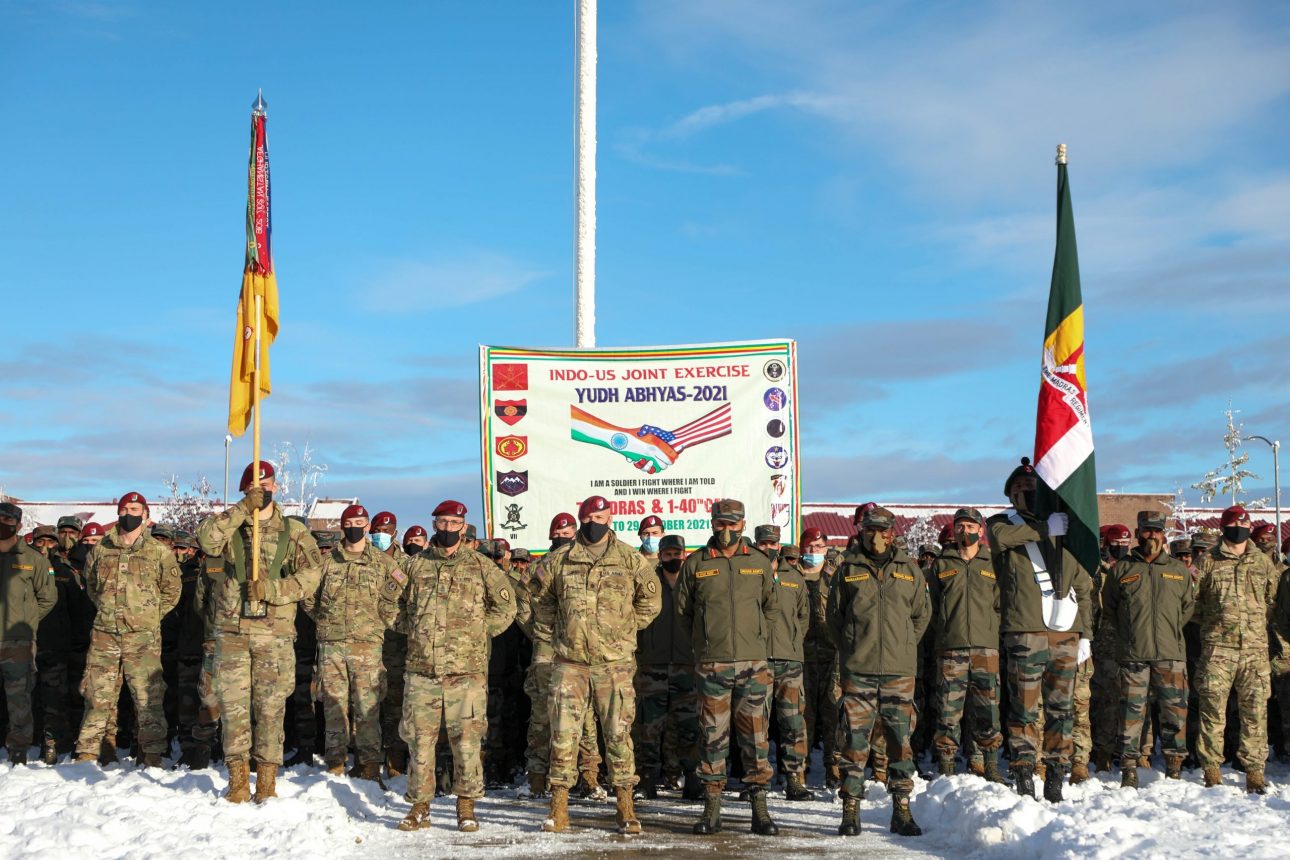The Indian Army plans to augment its firepower and fortify defenses along the Line of Actual Control (LAC) amid simmering tensions with China.
Even as the Indian Army’s Chief Engineer explained the blueprint to shore up strategic infrastructure, Defense Minister Rajnath Singh inaugurated a unit to manufacture BrahMos missiles while stressing the need for nuclear deterrence.
Engineer-in-Chief, Lieutenant General Harpal Singh, on December 26 said the Army was procuring the latest technology and equipment to build tunnels for ammunition storage and nuclear-hardened facilities, reported ANI.
Combat engineers ensuring ammo storage tunnels, nuclear hardened facilities for defence forces: Lt Gen Harpal
Read @ANI Story | https://t.co/LQhLqJzXGx pic.twitter.com/4AEmV95gE0
— ANI Digital (@ani_digital) December 26, 2021
Lt Gen Singh revealed the plans while speaking at an Institution of Engineers ceremony where he received the ‘Eminent Engineering Personality Award’ for his achievements.
The announcement assumes significance as there has been a considerable gap between infrastructure on the Chinese and Indian side of the contested border which has often given a strategic edge to the PLA Forces.
Lt Gen Singh, speaking at the ceremony said, “Combat engineers are escorting road connectivity to advanced areas, ensuring that local towns and villages designated as waypoints in our plans are in sync with Prime Minister Modi’s Gati Shakti operations”.
Meanwhile, inaugurating a BrahMos missile manufacturing unit in Uttar Pradesh, Defense Minister Rajnath Singh said, “The BrahMos missile is not meant to strike other countries but to provide India with the capability to discourage hostile forces from casting evil looks on our country.”
Attended the foundation stone laying ceremony of DRDO Defence Research Centre and BrahMos manufacturing unit in Lucknow today.
The two units will play a pivotal role in bolstering national security, defence production as well as the economy of Uttar Pradesh. pic.twitter.com/72JFieJIwd
— Rajnath Singh (@rajnathsingh) December 26, 2021
Emphasizing that India had never attacked or attempted intrusion on another country’s territory, he said, “We require a nuclear deterrent in order for no other country to consider attacking us.” He mentioned the Uri and Pulwama assaults, claiming that a neighboring country had always plotted and carried out terrorist acts in India, without naming Pakistan.
“However, we retaliated by hitting inside their territory and using airstrikes to send a message that if provoked, we can move beyond our borders as well,” he said.
India faces the twin challenge of China and Pakistan with the former consistently arming the Pakistani military to counter-balance India’s power in South Asia. India has had offensive engagements with both its adversarial neighbors in the last two years. Even now the situation along both borders remains tense.
The dispute at the LAC has now entered its second winter after the last round of talks on de-escalation between India and China ended in a stalemate. As the PLA forces remain reluctant to vacate what India calls its own territory, the Indian military has been constructing new infrastructure, procuring requisite equipment, and deploying advanced systems with an aim of creating deterrence.
Tunnels, ‘Nuclear Hardened’ Facilities
Lt Gen Harpal Singh said, “Micro-tunneling is the flavor of the time, and it ensures robust defenses and functioning logistical infrastructure. Ammunition storage tunnels for the Army and Air Force are being built in large numbers.”
Micro-tunneling is a technology used to build utility tunnels with diameters ranging from 500mm to 4,000mm. According to Geostructures, micro-tunnels are built using a remote-controlled drilling and pipe-jacking system.
The drilling system provides continuous support to the excavation face by applying mechanical or fluid pressure to balance groundwater and earth pressures.

The construction of ammunition-storage tunnels is believed to enhance the fortifications for the ammunition of the Army and Indian Air Force, as means of safeguarding the munitions from adversarial fire.
“Nuclear-hardened facilities are also being created in forward locations to improve the capabilities of boots on the ground”, he said.
These facilities are expected to act as nuclear fortifications and shield critical infrastructure from enemy attacks. India remains marred in conflict with two nuclear-capable neighbors which could be the trigger behind developing these facilities.

In October this year, the Army had carried out intensive drills in the Bum La sector in Arunachal Pradesh, close to the LAC. In these drills, a counter-assault against Chinese tank attacks on Indian formation was launched from within the bunkers including Artillery, Air Defense, infantry troops, and the Indian Air Force as part of integrated warfare, as previously reported by Indian Today.
This is indicative of India’s focus on fortification of its equipment and ammunition as the scale and scope of the Chinese deployment have seen an upward tick as the conflict refuses to abate any time soon.
The construction of these facilities is also expected to bridge the infrastructure gap between the Indian military and the Chinese PLA. The year 2021 has witnessed enhanced construction activity by the Border Road Organisation (BRO) tasked with building roads, bridges and tunnels so as to ensure that logistics are in place.
“The dual-use BRO Infrastructure of roads, tunnels, and bridges is a force multiplier not just for our strategic goals, but also for community development in distant border place,” according to Lt Gen Harpal Singh.
BrahMos Missile
BrahMos is a joint venture between India’s Defence Research and Development Organisation (DRDO) and Russia’s NPOM to develop next-generation supersonic missiles for the Indian military.
Rajnath Singh laid the cornerstone for the DRDO Defence Technology and Test Centre while stressing the strategic relationship between India and Russia.

The BrahMos has already been inducted into the three branches of the Indian defense forces, namely the Army, Air Force, and Navy. Earlier, India had reportedly deployed the supersonic cruise missile near the Line of Actual Control (LAC), invoking strong rebuttal from China.
It is a ramjet supersonic cruise missile that may be launched from land, air, sea, or submarine platforms. It has a range of more than 200 kilometers and supersonic speeds of Mach 2.0-2.8, depending on cruising altitude.
The missile’s increased speed not only makes it more difficult to intercept but also increases its hit force. The BrahMos is equipped with stealth technology that minimizes its radar visibility.
Both the developments are proof of the Indian military’s constant effort at upgrading its defense as well as offense capabilities against its arch-foes sitting on the borders.
- Contact the author at sakshi.tiwari9555@gmail.com
- Follow EurAsian Times on Google News




